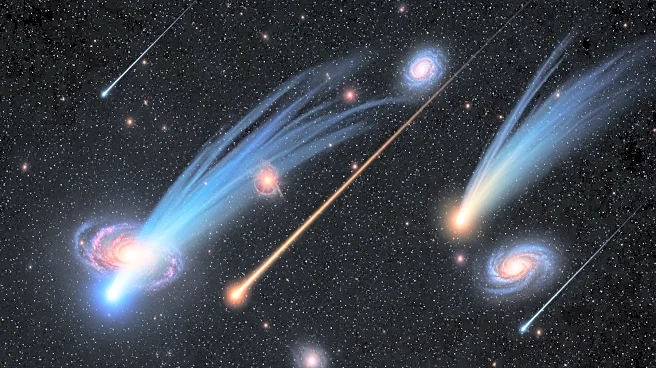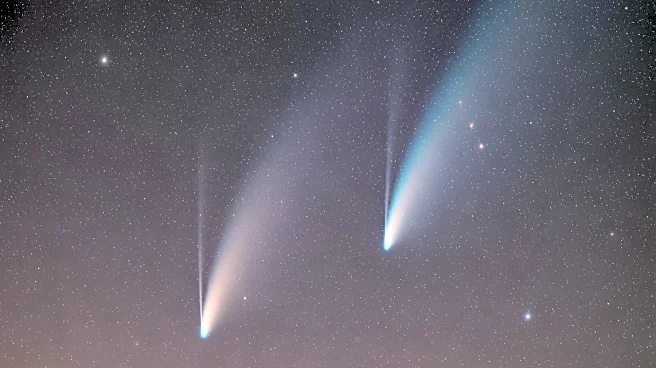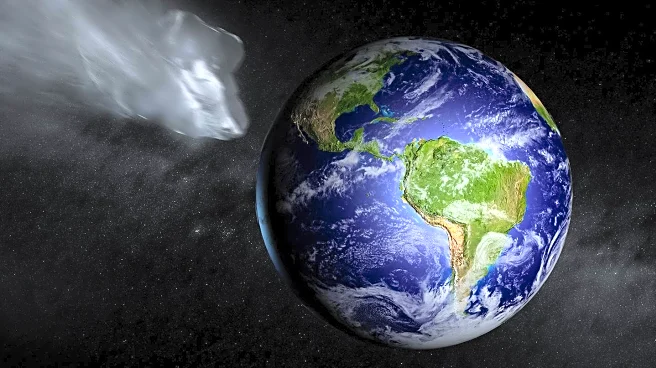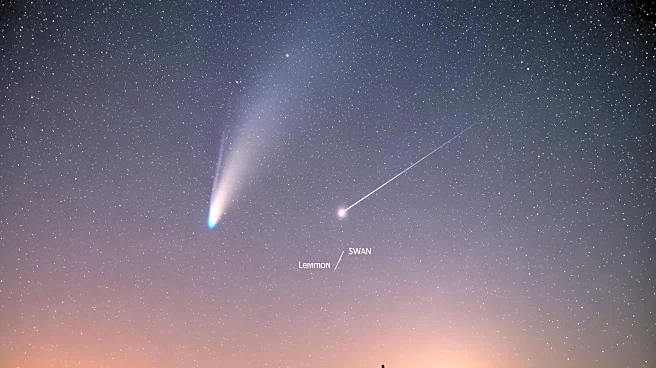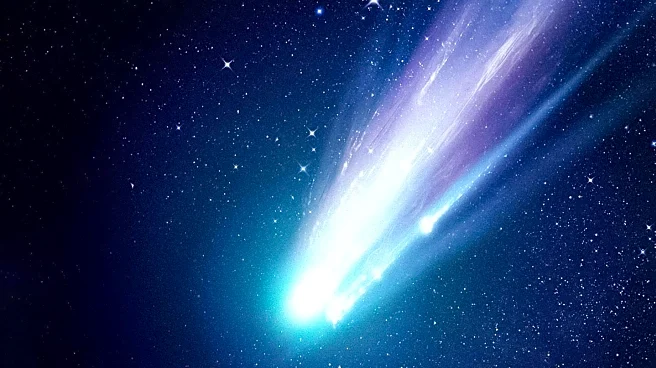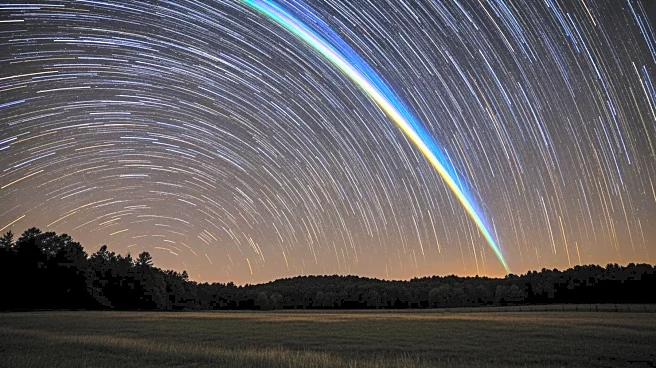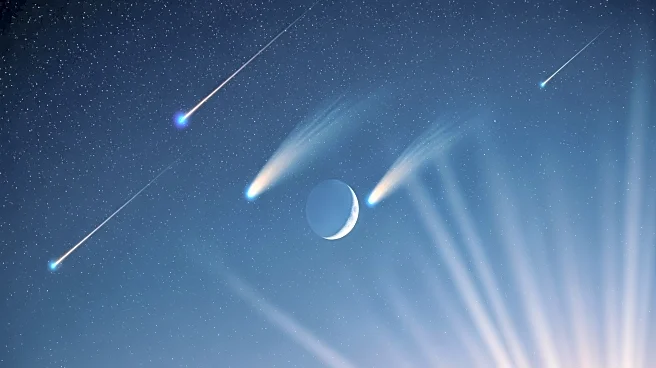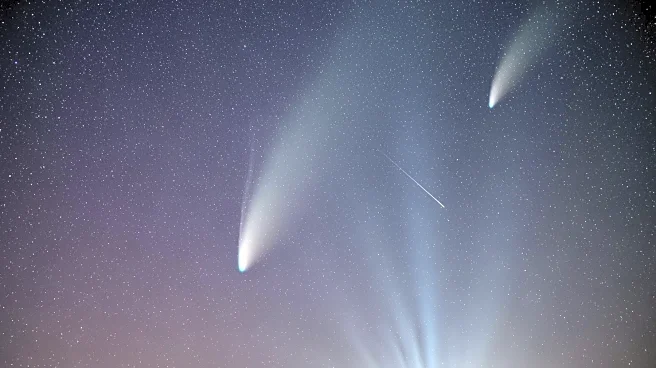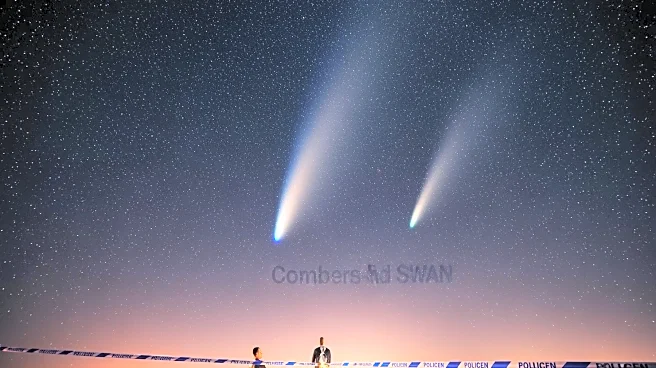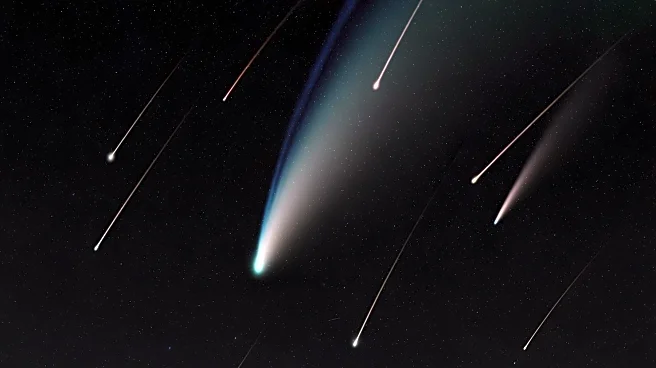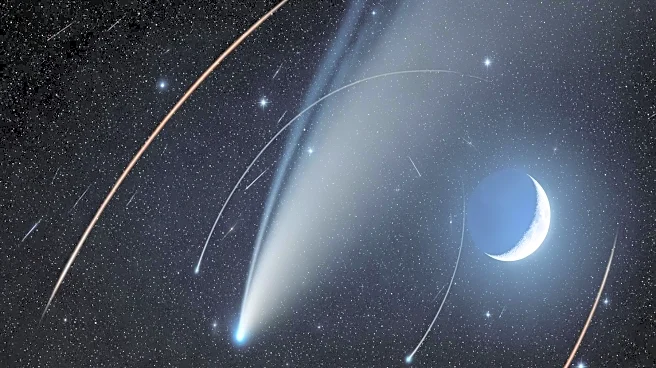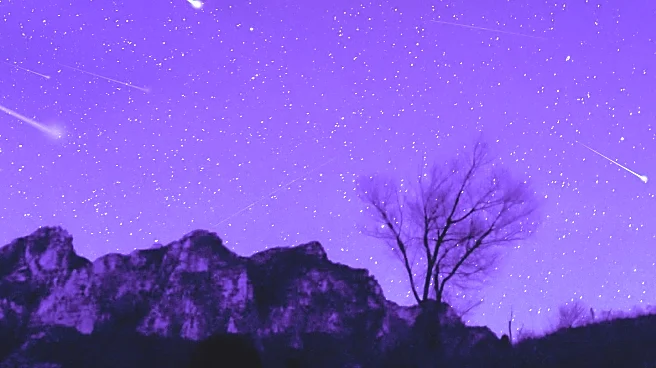What's Happening?
Stargazers in Ohio are presented with a rare opportunity to witness two comets, Comet Lemmon (C/2025 A6) and Comet SWAN (C/2025 R2), as they make their closest approach to Earth on October 21, 2025. Comet Lemmon, discovered at the Mount Lemmon Observatory
in Arizona, will pass within 56 million miles of Earth, while Comet SWAN will be even closer at approximately 24 million miles. Comet Lemmon is expected to brighten as it approaches the sun, potentially becoming visible to the naked eye by October 31 or November 1. Comet SWAN, on the other hand, is moving out of the solar system and will continue to dim. Stargazers are advised to use binoculars or telescopes for better viewing, and to seek out dark sky locations in Ohio for optimal visibility.
Why It's Important?
The visibility of Comet Lemmon and Comet SWAN offers a unique astronomical event, as these comets will not return for over a thousand years. This presents a rare chance for both amateur and professional astronomers to observe and study these celestial bodies. The event also highlights the importance of dark sky locations, which provide optimal conditions for stargazing by minimizing light pollution. Such events can inspire interest in astronomy and science, potentially influencing educational and public outreach efforts in the field.
What's Next?
As Comet Lemmon continues to approach the sun, it is expected to reach its peak brightness by early November, offering further opportunities for observation. Comet SWAN will gradually fade as it exits the solar system. Astronomers and enthusiasts may continue to track these comets using stargazing apps and star charts. The event coincides with the Orionid meteor shower, providing additional celestial phenomena for observation. Public interest in astronomy may lead to increased visits to dark sky parks and observatories.
Beyond the Headlines
The event underscores the significance of preserving dark sky areas, which are crucial for astronomical observations and research. It also highlights the role of amateur astronomers in discovering and tracking celestial objects, contributing to scientific knowledge. The visibility of these comets may spark discussions on the importance of space exploration and the need for continued investment in astronomical research.


